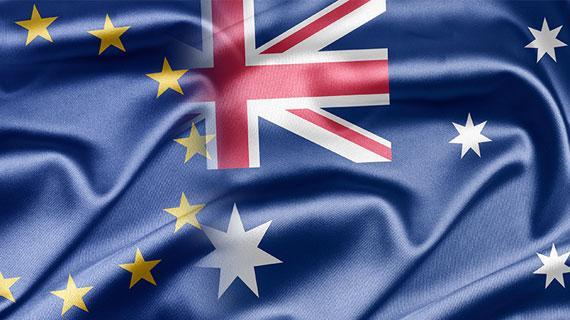EU-Australia FTA Update March 2023
Since the 13th round of negotiations in October 2022, the political stars have aligned with both the EU and Australia have committed to sealing a deal by July 2023, treating it as a top political priority.
Australia’s Minister for Trade, Don Farrell has publicly acknowledged Australia’s intention to finalise a deal by the first half of 2023 and six Australian Ministers visited Brussels and different EU capitals in January 2023, showcasing Australia’s commitment to a deal.
A few days before the start of the 14th round of negotiations, on 1 February 2023, the European Commission released its Green Deal Industrial Plan, which sets an ambitious trade agenda to ensure the bloc does not lose ground in the net-zero tech race – a response, to the US’s Inflation Reduction Act and China’s cleantech dominance. The Plan unveiled the European Commission’s objective to extend the EU’s FTA network and in particular to conclude a deal with Australia by the 2023 European summer.
In this very favourable context, the 14th round of negotiations was held in Canberra between 6 and 10 February 2023, the first time the EU negotiating team could physically travel to Australia since the 6th round of talks in February 2020.
Though the round did not lead to the conclusion of many additional chapters, and a lot of work remains to be done before a deal can be signed, significant progress has been made across the FTA, including:
- The (sub-)chapters on maritime services, telecommunication services, and on competition were provisionally concluded during the round.
- The revised offers on services and investment, as well as on goods (tariff) and government procurement, which had been exchanged in the course of 2022, were further discussed. For public procurement, both sides explored options for a final market access package and discussed potential exceptions for SMEs. Sensitive products (e.g. market access for other key agricultural products) were not discussed. Such discussions will be kept for the end game of the negotiations.
- Progress has been made for sanitary and phytosanitary measures (SPS) and both parties considered introducing a dispute settlement mechanism. Negotiators reached an agreement on the objectives of the dispute settlement and mediation chapter, which include transparent, efficient, and effective dispute settlement procedures.
- In the Trade and Sustainable Development (TSD) chapter, good headway was made. It was the first-time negotiators were able to discuss the EU’s revised offer, made in October 2022, which reflects the recent recalibration of the EU’s trade policy to enhance the contribution of the bloc’s trade agreements in protecting the climate, environment, and labour rights worldwide, notably through the enforceability of mutual binding commitments such as the Paris Agreement.
During the 14th round, negotiators discussed the outstanding elements in the TSD chapter including the labour provisions and the EU’s proposals on dispute settlement. Of note, the negotiators agreed on provisions on trade and sustainable forest management and climate change. As important work remains to be done, several follow up actions were agreed.
The TSD chapter is politically important for the EU as the European Parliament, which will be required to ratify the deal, expects ambitious sustainability commitments in all future EU FTAs. Heralded in the EU as the “gold standard” for future FTAs, the EU-New Zealand FTA concluded in June 2022 is the first EU FTA to include enforceability of TSD commitments.
- For energy and raw materials, good progress was made at the technical level on several issues including an agreement on authorisation procedures, environmental impact assessments, offshore risk and safety and renewable fuels. Parties are looking to pathways forward to iron out energy regulatory provisions as well as energy and resources pricing issues.
- Though some provisions of the general rules of origin have been agreed upon, further work is required to close key outstanding points. It is similar for technical barriers to trade. Provisions on international standards, transparency and market surveillance were closed, and further text was agreed on the motor vehicle annex. However, it is understood there remains an important volume of outstanding articles and annexes.
- No key progress on the digital trade chapter. At this stage, it is unlikely that Australia’s consideration of introducing European-style rights (such as the right to be forgotten) as it currently reviews its privacy rules, will impact favourably the negotiations.
- Finally, discussions continue to advance positively on specific language for First Australian Nations People, on subsidies and on state owned enterprises. Several longstanding issues across the Intellectual Property Chapter, including on copyright, trademarks and border measures have been resolved.
- Discussions on geographical indications (GIs) focused on the relationship between GIs and trademarks and respective interests on key GI terms. The Australian Government has not agreed to any GI terms and will only agree at the FTA conclusion if the overall package is good enough.
The official report from the EU is available here and the report from the Department of Foreign Affairs and Trade (DFAT) is available here.
Next steps:
- With the political momentum at its peak and a fast-approaching ambitious deadline, the negotiating teams are under strong pressure to clear voluminous work before the table for political discussions can be set to reach a deal with beef market access high on the menu.
- A 15th round of negotiations is planned for April 2023 in Brussels. It is hoped to be the final full round, to be followed by a 5×5 round of senior negotiators and finally political negotiations to iron out the most sensitive issues. To ensure both sides continue steady progress in the lead-up to the next round, a high number of follow-up actions have been agreed on, including the convening of inter-sessional discussions in the coming weeks.

